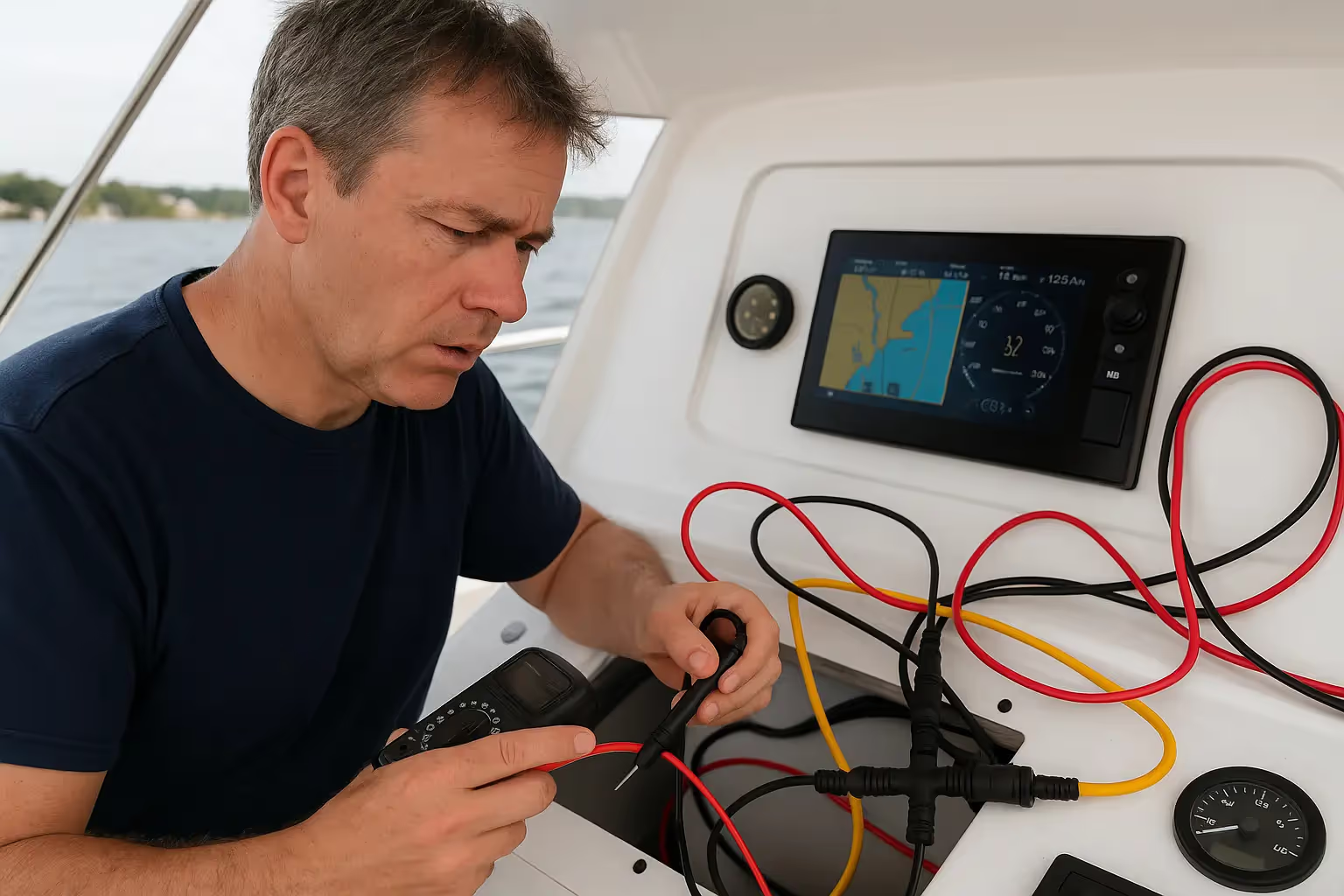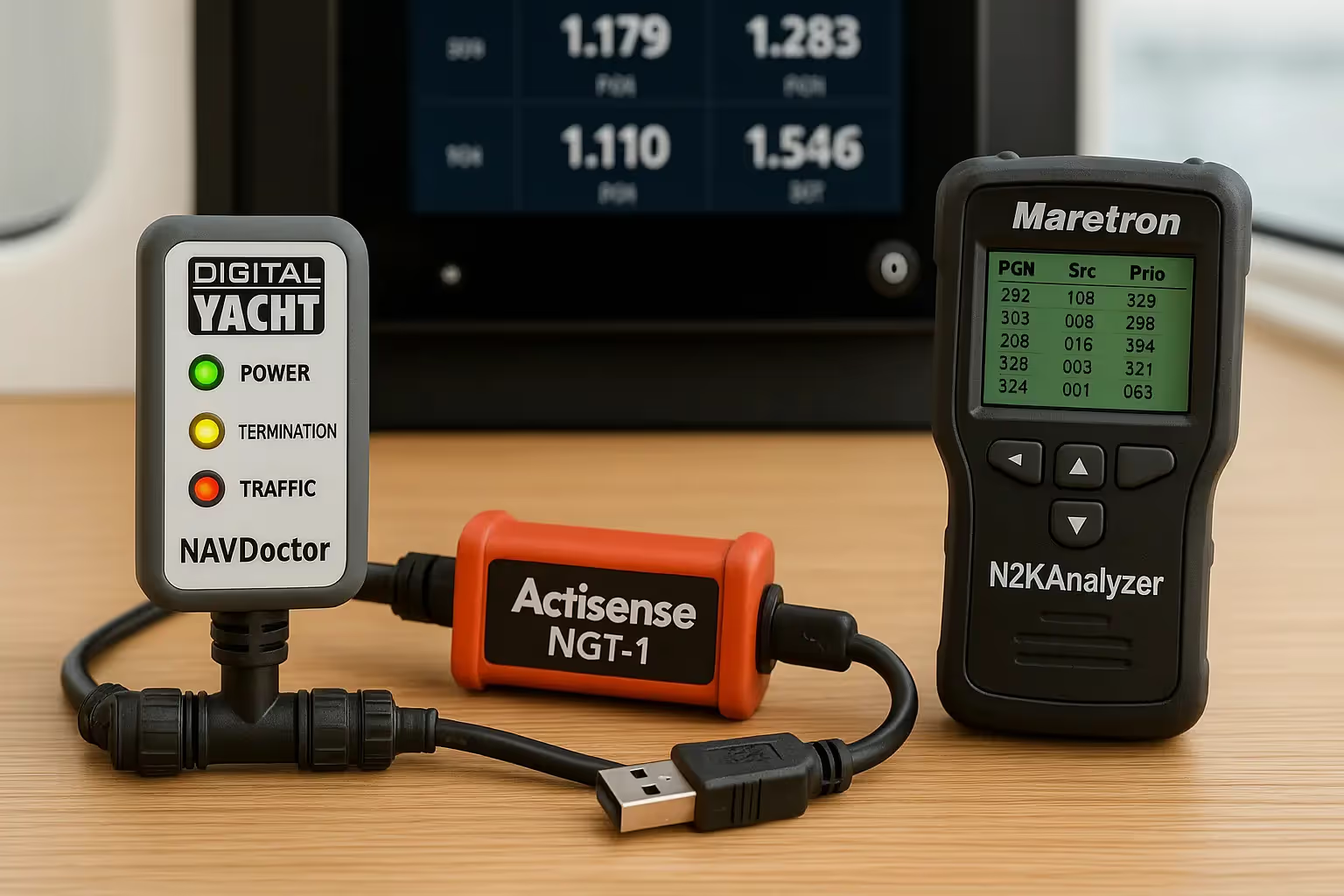Preparing for Solo Sailing: A Guide for Independent Voyagers

Section 1: Rigging and Equipment for Solo Sailing
In solo sailing, your rigging and equipment are your lifelines. They make sure that even when you're the only one aboard, you're never really alone. Efficiency, safety, and ease of use are the pillars of a well-outfitted solo sailing vessel.
The convenience of Running All Lines to the Cockpit
Running all lines to the cockpit isn't just a convenience; it's a strategic move for safety and efficiency. By centralizing control, you can operate halyards, sheets, and reefing lines without leaving the helm. This configuration helps keep the boat under control, particularly when making quick adjustments in reaction to shifting sea or weather conditions.
Electric Windlass
An electric windlass eases the effort of anchoring processes; it is a solo sailor's muscle. This saves energy for harder activities by making lifting and lowering the anchor only a question of pushing a button. It's a tool that can greatly improve your productivity and safety by allowing for remote operation from the cockpit, as it eases the operation, meaning that the boat is not left out of control.
Electric Winches
Similarly, electric winches are a game-changer, especially when handling sails. They allow for the easy raising and lowering of sails, even in the most challenging conditions, reducing physical exertion and allowing you to focus on navigation and overall vessel management. The less time and effort you spend on manual adjustments, the more you can dedicate to critical tasks, making your journey safer and more enjoyable.
By providing your boat with the proper rigging and gear, you're laying the groundwork for a safer, more comfortable, and more fun solo sailing experience. Each piece of equipment, from the lines you run to the cockpit to the electric winches, plays a critical role in ensuring that your journey is as much about the joy of sailing as it is about reaching your destination.
Section 2: Sail Handling and Autonomy
In solo sailing, autonomy is paramount, and efficient sail handling is the key to independence on the open sea. An easy reefing system is essential, allowing the sailor to swiftly adjust the sail area from the safety of the cockpit. These systems need to be robust and simple, allowing for quick changes in response to the ever-changing conditions of wind and weather. The ability to reduce sail quickly ensures safety and keeps the vessel balanced and responsive. These maneuvers should be practiced repeatedly so that they are second nature in inclement weather.
Easy Reefing Systems
The cornerstone of sail handling is an easy reefing system. It allows for rapid adjustment of sail area, accommodating sudden weather changes or when entering complex navigational areas. The goal is to manage these changes safely, efficiently, and without requiring you to leave the cockpit. This lowers the possibility of mishaps or mistakes at critical times in addition to saving valuable time.
Auto Pilot and Wind Steering with Separate Rudder
A reliable autopilot system is a solo sailor's best companion, steering the boat while you attend to other tasks or rest. Modern autopilots are sophisticated, offering precise control and adaptability to various sea conditions. However, it's the integration with wind steering systems that truly enhances autonomy. With a separate rudder, wind steering provides an independent and noiseless way to stay on course while utilizing only wind force, also saving power, especially on long journeys. With two systems, there is always continuity and dependability in navigation, even in the event of one failing. The wind pilot can also act as an emergency rudder in a push.
Embracing these technologies in sail handling and autonomy allows the solo sailor to face the vastness of the ocean with confidence. With a boat that responds intuitively to both command and condition, solo voyages become less daunting and more about the pure enjoyment of sailing.
Section 3: Sustainability and Endurance
A solo sailing adventure requires not only skill and courage but also a keen focus on sustainability and endurance. To ensure a successful and prolonged voyage, every aspect of the boat's operation needs to be geared towards efficiency and self-sufficiency.
Fuel and Water Storage
Long voyages demand a substantial amount of fuel and water. Increasing the capacity of your tanks or supplementing them with jerry cans ensures you have enough supplies to last for the whole journey. This is not just about convenience but also about safety and endurance. Larger tanks mean longer intervals between resupply, allowing you to venture farther into remote areas or withstand unexpected delays due to weather conditions.
Using a Pilot Berth for Rest and Effective Sleep Management
One of the hardest things about sailing alone is sleeping. A pilot berth offers a safe and cozy spot to relax. Because of its accessibility and safety features, you can take fast, rejuvenating naps while still being prepared to act swiftly when necessary. It's critical to have a regular sleep schedule to strike a balance between the necessity of rest and attentiveness.
In focusing on sustainability and endurance, you're not just preparing for a journey; you're ensuring that your solo sailing experience is as rewarding as it is challenging. With the right setup for fuel, water, and rest, you can focus on the horizon with confidence, knowing you're well-prepared for whatever may lie ahead.
Section 4: Safety and Connectivity
Solo sailing requires a comprehensive approach to safety and connectivity. These are not just about dealing with emergencies but are integral to the everyday management and enjoyment of your journey.
Safety: Lines, EPIRB, Life Jackets, and AIS with Collision Alarms
The foundation of solo sailing safety is the right gear. Safety lines are a must, ensuring you're tethered to the boat at all times. An EPIRB (Emergency Position Indicating Radio Beacon) is essential for global distress signaling, and life jackets need to be worn at all times. The AIS (Automatic Identification System) with collision alarms is especially crucial for a solo sailor, providing alerts about nearby vessels and potential collision courses, particularly important during rest or when attention is diverted.
Maintaining Communication
In the vastness of the sea, staying connected is essential. A satellite phone ensures that you can get help when you need it and keep in touch with others. Internet connectivity, through devices like Iridium GO!, and more recently Starlink, allowing full internet access over much of the world, is not just for keeping in contact with loved ones or entertainment; it's a critical tool for receiving weather updates, navigating, and accessing emergency services. Together, these tools form a lifeline, connecting you to the rest of the world, even from the middle of the ocean.
In addressing safety and connectivity, you're equipping yourself not just with the tools to survive but to thrive. They ensure that your solo sailing experience is marked by confidence and peace of mind, knowing that you're prepared for the expected and the unexpected.
Conclusion
Solo sailing is a testament to self-sufficiency and courage. With the right preparation, from ensuring efficient rigging and equipment to prioritizing safety and connectivity, you're set for an unforgettable journey. Embrace the sea's call with confidence and respect.
FAQ
1. What is the most crucial safety equipment for solo sailing?
A life jacket, safety lines, a mobile EPIRB, and an AIS system with collision alarms are all crucial. These ensure personal safety and help avoid collisions.
2. How do I manage sleep on a solo voyage?
Utilize a pilot berth for short, regular naps. Set a proper sleep schedule and use alarms to wake up periodically for checks.
3. What communication tools are essential for solo sailing?
A satellite phone and internet connectivity devices like Iridium GO! are essential for maintaining communication, especially in more remote areas.
4. How do I maintain control of the boat when not steering?
An autopilot system is essential for steering when you're busy or resting. A wind steering system with a separate rudder offers an alternative, energy-efficient option.
5. How can I ensure sufficient water and fuel for long trips?
Increase your boat's fuel and water capacity with larger tanks or carry extra in jerry cans. This preparation is crucial for extended voyages or emergencies.









.jpeg)




